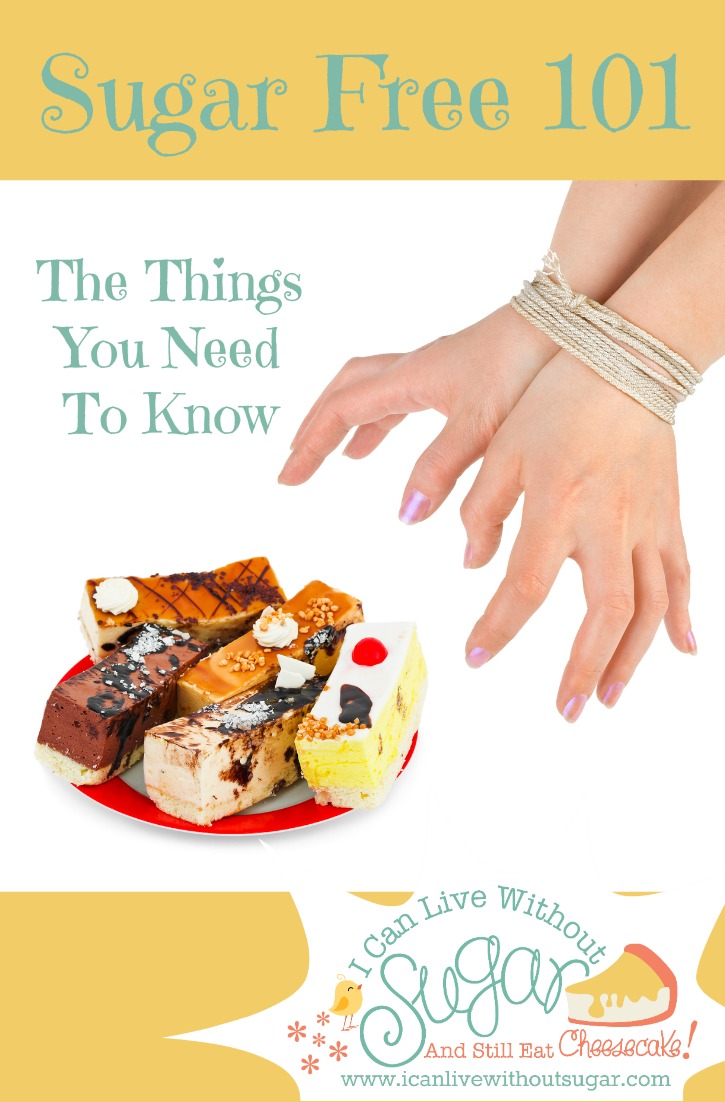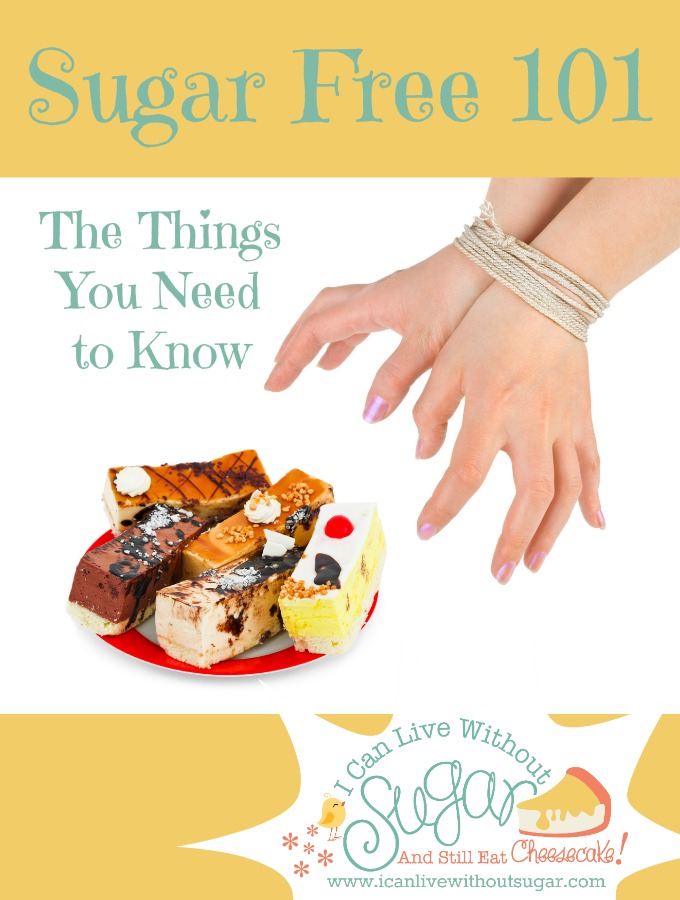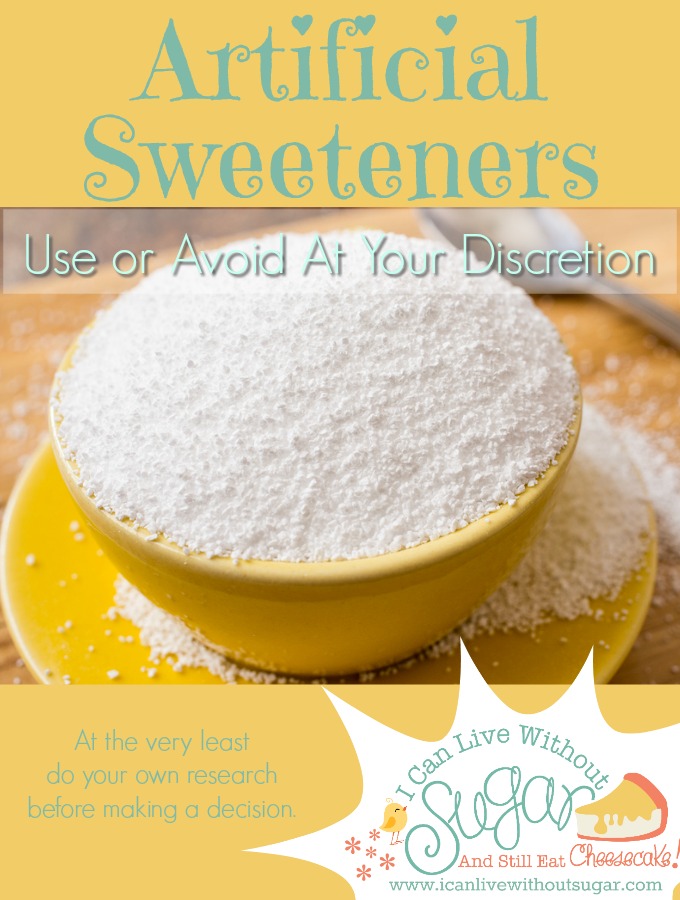The term sugar free means different things to different people. For the purpose of a low carb high fat (keto) diet, it means eliminating ALL sugar (white, brown, raw, etc.). Naturally sweet syrups such as honey, maple, agave, etc., must also be avoided. In short, sugar in whatever shape or form, is off the menu! However, not everything “sweet” is forbidden, thanks to a variety of “sugar” alternatives.
Sugar Free Sweeteners
When a recipe calls for sugar there’s a variety of sugar free sweeteners you can use instead. Exactly which one depends on a number of factors, e.g. the type of sugar being replaced, its function in a recipe (does it require the bulk of sugar, etc), personal taste, preferred brand, cost, etc. Whatever the need, there’s a sugar free sweetener for each and every purpose. With a little trial and error, you’ll learn what works best for YOU and discover your own personal go-to sweeteners.
10 Popular Sugar Free Sweeteners
-
- Xylitol
- Erythritol
- Erythritol & Stevia Blend
- Erythritol & Monkfruit Blend
- Sucralose sweetener drops (1 drop = 1 tsp “sugar” sweetness)
- Sucralose sweetener drops (2 drops = 1 tsp “sugar sweetness)
- Pure Stevia Non GMO (powder)
- Stevia & Monk Fruit (liquid drops)
- Tagatose
- Pre-Biotic Fiber Sweetener (syrup)
You’ll also find quick and easy conversions for multiple sweeteners in the ICLWS sweetener converter. The converter makes it easy to swap sugar for one or more sweeteners.
Summary
Use These
- Sugar alcohols such as *xylitol and erythritol are sugar-free and are not counted as sugar. However, be aware that some people experience laxative effects if sugar alcohols are consumed in excess. If you haven’t used either of these previously it’s best to start out with small amounts. Try adding a teaspoon to hot drinks or sprinkled over berries to gauge your individual response. If you do not experience anything untoward, gradually build up to larger amounts. I personally have had no problem with either xylitol or erythritol and have not gained weight gain from using them. As sugar alcohols pass through the body undigested I don’t include any carbs from them in my recipes.
- Note: *Xylitol is toxic to animals and may prove fatal if ingested. Store xylitol and/or any foods or drinks containing it away from pets. Some people worry that if xylitol is toxic to animals it may also have an adverse effect on humans. I tend to regard xylitol much the same way as chocolate (which is also toxic to dogs). Neither xylitol or chocolate should be eaten to excess and a little of either is fine. In the case of chocolate, my preference is for Lindt 90%. It’s much, much lower in sugar and carbs (only 14 g carbs in a whole 100g block) than varieties containing a lower percentage of cocoa.
- Stevia is a herb that some people like to use but may have a bitter aftertaste (less is more!). It’s worth trying different brands to find ones that don’t. I’m still searching for one I like and tend to stick with xylitol, erythritol, IMO syrup or sucralose.
- Tagatose is very similar in taste and texture to regular white sugar, but a lot finer. It’s actually made from milk. It has a low burning point, so not always ideal for baking at high temperature. Some people find it has a laxative effect. I may or may not have suffered such a fate (abdominal pains—or worse!). So unfair, as it tastes great and does not crystallize! As with anything new to your system, start out in small increments to check for any adverse reaction.
- Sugar Free (Pre-Biotic Fiber) syrup is also known as IMO (isomalto-oligosaccharides). This sugar free syrup is made from tapioca (Cassava) starch. It’s quite sticky although less sweet than I’d expected. I use this more for its texture than anything else and mix it with one or two other sweeteners. This not only boosts the sweetness, it also rounds out the flavour (I do this across the board with a variety of sweeteners). It’s well worth experimenting when using sweeteners to find your own sugar free “sweet” spot. The beauty of having this syrup on hand is it makes whipping up delicious caramel and maple syrups, protein bars, truffles and other sugar free goodies so easy. As a pre-biotic containing 90% soluble fiber it’s also great for gut health. It is worth mentioning, however, that some studies suggest blood sugar levels may rise when using this. If you suffer from diabetes I’d recommend testing your blood sugar before and after using a small amount of this to judge your own response.
Avoid These
- Agave
- Castor sugar
- Coconut sugar
- Coffee sugar crystals
- Confectioner’s sugar (also known as icing or pure icing sugar)
- Honey
- Maple syrup
- Molasses
- Palm sugar
- Raw sugar
- Regular white sugar
- Rice bran syrup
- Rice malt syrup
- Sugar cubes
- Treacle
Artificial Sweeteners
No discussion on sugar free sweeteners would be complete without mentioning artificial sweeteners.
There is some controversy around the safety and suitability of using artificial sweeteners. ICLWS encourages readers to do their own research into artificial sweeteners before deciding whether or not to use them.
Four of the most commonly known artificial sweeteners are included below for the sake of completeness. I personally steer clear of the first three but have experienced no ill effects from using the fourth.
- Acesulphame potassium
- Aspartame
- Saccharin
- Sucralose
Get Your FREE Sugar Swapper
No more guesswork! The ICLWS sugar swapper shows you exactly how much sugar free sweetener to use in place of sugar. It’s easy to use and contains a variety of popular sweeteners. Use them individually to replace sugar or mix them together like I do. I find mixing two or more sweeteners together gives a much fuller, rounder taste, just like sugar! I usually use xylitol and erythritol and sometimes a drop or two of EZ-sweetz, depending on the recipe. I highly recommend experimenting with a few sweeteners to create your own special blend.
Amazon makes it so easy to order
You’re sure to find just the right sweeteners!
Get your free ICLWS Sugar Swapper NOW.



